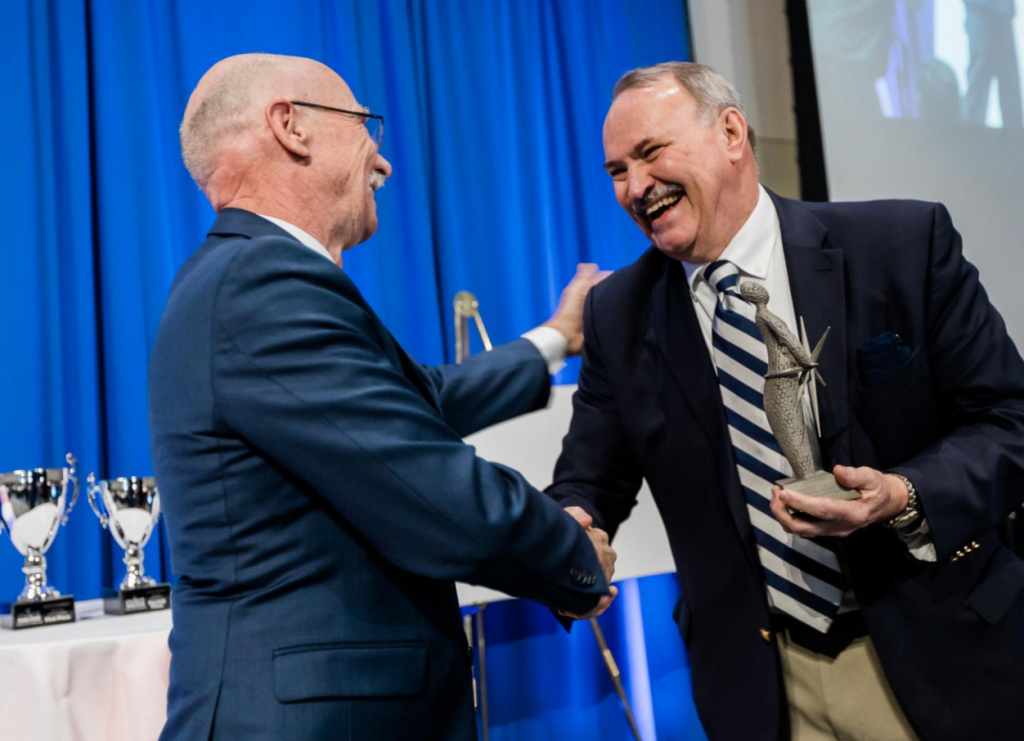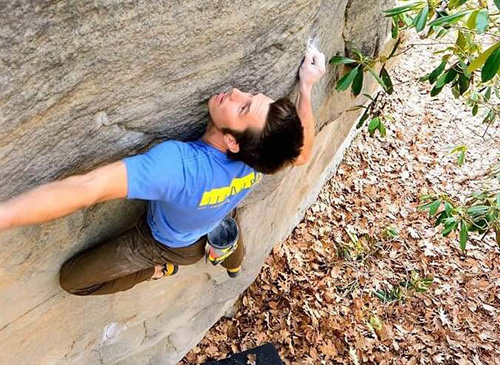
HappyValley Industry recently sat down with James Adair, professor of materials science and engineering, biomedical engineering and pharmacology. Named Invent Penn State’s “Inventor of the Year” in 2018, Adair is part of a team working on an innovative cancer treatment that could be a real game-changer.
Adair, who grew up in Jupiter, Florida, during the era of the space race, discovered a love of chemistry in childhood, which set him on a winding path that has now brought him to the precipice of a potentially groundbreaking cancer treatment, which will hopefully start trials within the next 24 months.
HappyValley Industry: What inspired you to become a professor of materials science and engineering, biomedical engineering and pharmacology?
Adair: Every year, my parents would buy us toys. And one year they bought me an erector set. I had a lot of fun with that, but nothing very innovative. The next year, when I was about nine, they bought me a chemistry set and, within two weeks, I had my very first explosion. And I was naturally attracted to chemistry.
“Then, I come to Penn State and see this beautiful topography, lush and green in the middle of the summer. Literally as the plane started to circle, I said to myself, “They’re going to bury me there.”
When I went to college, I thought I wanted to be a physician. I went to Palm Beach Junior College to study chemistry and then, at University of Florida, I was honing myself toward medical school. I minored in zoology and got a BS in inorganic chemistry. But, I had a traumatic injury to my right knee in my first year there and was late applying to med school, so I didn’t get in.
I did end up reaching out to Larry Hench, who was working on biomaterials and bioglass at the time. I interviewed with him and he loved my background in chemistry and zoology. He sent me to talk to some of the graduate students and he basically assigned me to a younger faculty member who had a PhD from MIT. Two other, much more famous faculty members here at Penn State, Carlo Pantano and Gary Messing, had gotten their PhD with him, and we were all part of the same research group at University of Florida.
HappyValley Industry: Penn State is such an important hub of innovation and education in Happy Valley. Can you tell me what working with Penn State means to you and why you chose Penn State?
Adair: I did my PhD work on kidney stone disease and had an opportunity to do my post-doc work in Australia. I later worked for Battelle Memorial Institute, which was kind of a think tank for materials, where I spent four years. Meanwhile, Gary was here at Penn State at that point and he kept bugging me to check out Penn State.
“One of my philosophies is that we’re really put here to do good for our fellow human beings. It took me a long time, but this turned out to be my calling.”
We were working on explosively loaded composite materials at the time and I had submitted a composite approach to a conference that Dick Tressler, one of our famous ceramic engineers at Penn State, fostered. So I went to the conference and I’ll never forget my first impression of Happy Valley.
I was raised in South Florida, where the sight of a hill going into Alabama is the highest point. I had been in Australia for a year, which is also very flat, and I wound up in Ohio, which is arguably even flatter than Florida. Then, I come to Penn State and see this beautiful topography, lush and green in the middle of the summer. Literally as the plane started to circle, I said to myself, “They’re going to bury me there.”
HappyValley Industry: Can you tell me a bit about what led you to recognizing that there was potential for using nanotechnology in medical imaging?
Adair: One of my philosophies is that we’re really put here to do good for our fellow human beings. It took me a long time, but this turned out to be my calling.
In 1998, I found myself slowing down. My dad had cardiomyopathy – an enlarged heart – and I had the symptoms, but I was trying to build up the Center and get my research going. It turned out, I had it, too. I was Life Flighted on September 12, 1998, and no one thought I was going to survive, including me.
A healthy heart pushes out 55 to 65 volume percent with each beat. I was pushing out 15 when I got admitted to Hershey. My heart began responding to the medication and by the time I got out, my heart was at 20 percent ejection. But I was on an odyssey after that. And even though they say that you can’t repair the heart, I know enough about stem cell differentiation to know that you can stimulate things with the diet. I went to my local cardiologist and asked for a script to see a nutritionist, because I knew that they would know what would stimulate cell turnover in the heart.
I successfully reached normal range. In 2003, they downgraded my diagnosis.
Over the prior 25 years, I had become a real expert at synthesis and processing of nanoparticles, mostly metal oxides that we would make devices from, but now I was realizing that we had all of this great science on how to synthesize and disperse these very small particles and I started looking for a potential application that would be more impactful.
“All of sudden, we were in the middle of development of all these cancer formulations and now we’re becoming not just scientists associated with the development of these formulations, but we’re also becoming advocates to get rid of the medieval cancer treatments that have such terrible side effects for patients. That further transformed the way we thought and approached cancer.”
Later, I was giving a talk at the Polycrystalline Symposium on Ceramics and I-Wei Chan, a brilliant faculty member at University of Pennsylvania, was giving a talk on nanoparticles as a delivery system for drugs, only his basis was silicon dioxide, which is not bioabsorbable.
I thought that we could put an imaging agent on the inside of the core shell and have the silicon dioxide on the outside to deliver drugs. I kind of got that wrong. Thankfully, I had a marvelous graduate student working with me at the time who, by the end of that semester, developed beautiful fluorescent particles.
In 2007, my wife was diagnosed with breast cancer and a year later I was diagnosed with stage 3 colon cancer. All of sudden, we were in the middle of development of all these cancer formulations and now we’re becoming not just scientists associated with the development of these formulations, but we’re also becoming advocates to get rid of the medieval cancer treatments that have such terrible side effects for patients. That further transformed the way we thought and approached cancer.
HappyValley Industry: What are your goals for the future of this work?
Adair: We’re now in the optimization part of the development. Hopefully we’ll be in clinical trials within 24 months. I’m 69, I’ll be 70 next August and I have no plans to retire. I couldn’t possibly walk away from this, because our formulations are actually quite effective in animals. And now some of the next steps include human testing.
HappyValley Industry: It sounds like the results of your research hold a lot of promise. Can you describe why your work is so important?
Adair: We can systemically deliver these small particles that are bioresorbable, not bioresorbable in the bloodstream or throughout the GI tract or liver. This allows us to attach very small single-strand DNA molecules that will specifically bind to the proteins in the cell membranes of cancer cells. For example, with a vascularized cancer, we could give a systemic injection and the particles will circulate, find their way into exocellular fluid associated with the cancer and bond to the surface of the cancer cells, causing those cells to pull the particles into the cell through a process called endocytosis.
“The thing about Happy Valley is that, not only do we live in a beautiful area, with Penn State here we have most of the attributes of a big city, without all the bother.”
Now the particles, with the least lethal dose for the cell, will release inside the cells we want to kill and nowhere else. We haven’t seen any side effects at all. The particles get cleared through the liver, come out intact and are dumped into the small intestine, bypassing the low pH of the stomach. This allows the imaging agent and the drug intact in the fecal matter.
HappyValley Industry: It sounds like you might just blow cancer treatment out of the water.
Adair: Well, it’s a hard sell. It’s not easy to sell these concepts and ideas. There’s a lot of skepticism out there, as there should be. My surviving heart disease made me reassess and I really realized that I got back a third of my life and a third of my career. There are a lot of miracles that happen daily. And at the end of the day, I really hope I’m able to make a contribution.
HappyValley Industry: Would you recommend someone else move to Happy Valley?
Adair: The thing about Happy Valley is that, not only do we live in a beautiful area, with Penn State here we have most of the attributes of a big city, without all the bother. To me, that’s an incredible selling point. There’s a deep-seated love of Penn State and I think it’s a marvelous place to live no matter your age. And I know this for a fact: It’s a great place to raise your children.






